The mother of our little island passes. What a shock. God bless her.
The news starts to trickle through that the Queen is unwell and her family has been called to be by her side. As time progresses it seems that our Queen is seriously ill. After hours of being emotionally shocked. The news eventually comes through. The Queen has died. We have a new King, King Charles III.
The news came the day before we headed south to visit my 92 year old sister and visit Jane in Norfolk.
Can’t understand the feeling of grief, it’s a real mix of emotions. Virtually in tears as we hear the news. It’s as if one of our nearest and dearest have past. In fact they have. This lady has been our mother fr the past 70 years. Virtually my whole life.
On the drive down we listened to radio 4, the coverage on the death of the Queen was amazing. Emotions flowed, as did tears on occasions as we revelled in the enormity of the event.
The long reign of Queen Elizabeth II was marked by her strong sense of duty and her determination to dedicate her life to her throne and to her people.
She became for many the one constant point in a rapidly changing world as British influence declined, society changed beyond recognition and the role of the monarchy itself came into question.
Her success in maintaining the monarchy through such turbulent times was even more remarkable given that, at the time of her birth, no-one could have foreseen that the throne would be her destiny.
Elizabeth Alexandra Mary Windsor was born on 21 April 1926, in a house just off Berkeley Square in London, the first child of Albert, Duke of York, second son of George V, and his duchess, the former Lady Elizabeth Bowes-Lyon.
Whatever you think of Boris Johnson he does have a way with words and this tribute to Queen Elizabeth II is thoughtful, touching and expresses how so many people are now feeling.
The New York Times were perhaps one of the first News Papers to run with the News.
9 September 2022 at 06:53
Good morning. This special edition of covers the death of Queen Elizabeth Il.
An era comes to an end Queen Elizabeth I, Britain's longest- serving monarch, died at 96 yesterday afternoon at Balmoral Castle in Scotland, her summer retreat. Members of the royal family rushed to be at her bedside. The family's announcement did not specify a cause, but said she had "died peacefully"
Visibly frail, the queen had been in the twilight of her reign for some years. But the news of her death still landed with a thunderclap across the British realm, where she was a widely revered figure viewed as an anchor of stability.
Her death comes at a time of uncertainty in Britain. Prime Minister Liz Truss has been in office for only three days, following months of political turmoil. The country faces its gravest economic threats in a generation.
A changing world: Over Elizabeth’s 70 years as sovereign, she sought to protect the royal family as a rare bastion of permanence. At the time of her coronation in 1953, Britain’s empire stretched across the globe. Now, a growing clamor for independence in Scotland threatens to narrow its horizons yet further.
Analysis: “There is no analogous public figure who will have been mourned as deeply in Britain — Winston Churchill might come closest — or whose death could provoke a greater reckoning with the identity and future of the country,”
For more
Look back to 1926 and the announcement of Elizabeth’s birth in The Times. It described her as “the fourth lady in the land” and “a possible, though improbable, successor to the throne of England.”
• From Prince William (next in line) to Lucas Tindall (No. 23): A visual breakdown of the new line of royal succession.
King Charles III assumes the throne
Charles, Queen Elizabeth II’s eldest son, yesterday ascended to the throne at 73, after being the designated successor for longer than anyone in British history. He will be sovereign of the world’s most important constitutional monarchy and head of a storied royal family — though it is unclear whether he will ever enjoy the respect or affection showered on his mother.
As Prince of Wales, Charles founded charities like the Prince’s Trust, which has helped nearly a million disadvantaged young people, and championed causes like sustainable urban planning, climate change and environmental protection. He has also spoken out regularly for religious tolerance and against Islamophobia.
For many, his marriage to Diana, Princess of Wales, which crumbled amid lurid tabloid headlines and mutual charges of infidelity, remains the defining event of Charles’s public life. But her death proved a turning point: Charles worked with Tony Blair, the prime minister at the time, to nudge his mother into honoring Diana’s memory and then set about rehabilitating his own image. He has been married to Camilla, now the queen consort, since 2005.
Future plans: Charles has long pushed to streamline the monarchy, partly to reduce its drain on the public purse. As king, he will be able to put that plan fully into action.
Troubles: The royal family has in recent years been rocked by a bitter falling-out between Charles and his younger son, Prince Harry, and the ties of his brother Prince Andrew to the disgraced financier Jeffrey Epstein. Andrew in February settled a lawsuit brought by a woman who accused him of sexually abusing her when she was a teenager.
The days to come
Britain now enters an official period of mourning that continues until after the queen’s funeral, which is expected to take place 10 days after her death and be a public holiday. Charles will address the nation as king for the first time today; tomorrow, heralds will travel to Trafalgar Square in London by horse to read a proclamation declaring his reign.
The queen’s coffin will rest at Buckingham Palace for four days, then lie in state in Westminster Hall for several more, atop a platform draped in regal purple with guards at each corner. The days long process of ritual was mainly created in the late 19th century by Queen Victoria and her son, Edward VII.
While the sovereign’s political power is largely symbolic, the monarchy has a constitutional role in Britain, so there will be formalities conducted with royal flair. According to protocol, within 24 hours of the queen’s death, lawmakers in Parliament will take oaths of allegiance to the new king. The national anthem will shift back to “God Save the King.”
Global response: See photographs of how the world responded to the queen’s death |
Thousands of mourners have been paying their respects to Queen Elizabeth II as Scotland prepares to say its final farewell to the late monarch. Her coffin has travelled from Balmoral Castle to Edinburgh where a respectful silence fell during the six-hour journey as people watched the cortege pass. Some people threw flowers in its path, and as it went by, you could hear polite applause and cheers. The journey ended at the city's Royal Mile, with pallbearers carrying the Queen's coffin into the Palace of Holyroodhouse. The Princess Royal, Princess Anne, had travelled as part of the cortege and was among the members of the Royal Family watching.
The Queen's journey in Scotland continues later when King Charles III and members of the Royal Family will follow the coffin along the Royal Mile to St Giles' Cathedral. There will be a service celebrating the Queen's life, and then people will be able to pay their respects and say their final goodbyes. As the Queen lies at rest in the cathedral until Tuesday, her coffin will remain under the guard of the Royal Company of Archers. The Queen will be taken to lie in state at Westminster before her funeral, which The Very Reverend Dr David Hoyle said would be "an opportunity for us to give thanks for an extraordinary life... and an opportunity, if you like, for us to give the grief somewhere to go".
The Crown of Scotland is the crown that was used at the coronation of the monarchs of Scotland. Remade in its current form for King James V of Scotland in 1540, the crown is part of the Honours of Scotland, the oldest surviving set of Crown jewels in the British Isles. The crown dates from at least 1503 when, in an earlier form, it was depicted in the portrait of King James IV in the Book of Hours commissioned for his marriage to Margaret Tudor.
Queen Elizabeth, Queen of Scots, we are grateful for her life - Sturgeon
Sturgeon closes her speech, stating the Queen has been "intrinsic" to Scotland.
"She was present at so many of our iconic moments," she says.
"She was also a true and steadfast friend of the Scottish Parliament," she adds.
"On the day we reconvened in 1999, she allowed the title, Queen Elizabeth, Queen of Scots, to be used," she says, closing the speech with: "Queen Elizabeth, Queen of Scots, we are grateful for her life. May she now rest in peace."
In a slow and sombre procession, the Royal Family followed the Queen's coffin from Buckingham Palace to Westminster Hall.
Mournful music played during the ceremonious cortege, as guns were fired in Hyde Park and Big Ben was tolled every minute.
Monday 19th September 2022
The day marks the climax of what is being
regarded as the biggest security operation the UK has ever seen, surpassing the operation for the Platinum Jubilee weekend and the London 2012 Olympics, which saw up to 10,000 police officers on duty per day.
The Queen died on Thursday 8
September at the age of 96, bringing an
end to the monarch's 70-year reign and
triggering a period of national mourning.
The Royal Family will remain in mourning
until 26 September, seven days after the
funeral.
Timeline
8am Westminster Abbey opened
The doors of Westminster Abbey opened and the first guests began to take their seats.
A total of 500 foreign dignitaries are among
2,000 guests including politicians, civil servants, some celebrities and many 'ordinary' members of the public selected for charitable or community works.
Many world leaders who met the Queen during her long reign will be among those representing nearly 200 countries and territories.
10.35am Queen's coffin left Westminster Hall
Shortly after 10.35am the coffin was lifted and carried in procession to the state gun carriage of the Royal Navy positioned outside the north door.
10.44am Procession to Westminster Abbey
The procession involved a total of about 6,000 representatives from all three armed services, with 98 Royal Navy sailors pulling the 123-year-old gun carriage carrying the Queen's coffin to Westminster Abbey.
This follows the tradition set at the funeral of Queen Victoria in 1901, when horses panicked and a party of sailors was commandeered to haul the carriage through the streets of Windsor.
Since then, the carriage, built in 1899, has been kept in an environmentally secure room at HMS Excellent in Portsmouth - where its custodian, Lieutenant Commander Paul "Ronnie" Barker turns its wheels a quarter-turn each week to ensure they do not become bowed by gravity.
Following the Queen's coffin were the King and his siblings, and the Queen's grandsons.
They were followed by the Queen's son-in-law Vice Admiral Sir Tim Laurence, her cousin the Duke of Gloucester and her nephew the Earl of Snowdon.
10.52am Procession arrived at the Abbey
The procession, led by Pipes & Drums of
Scottish and Irish Regiments, the Brigade of
Gurkhas, and the Royal Air Force and
numbering 200 musicians, arrived at about
10.52am and the coffin was carried into the
Abbey for the service.
11am Funeral service begins
The funeral is being conducted by the Dean of Westminster, with Prime Minister Liz Truss and the Secretary General of the Commonwealth to read Lessons.
The Archbishop of York, the Cardinal
Archbishop of Westminster, the Moderator of the General Assembly of the Church of
Scotland and the Free Churches Moderator will say prayers.
The sermon is being given by the Archbishop of Canterbury, who will also give the commendation. The Dean of Westminster will then pronounce the blessing.
11.55am Last Post and two-minute silence
Towards the end of the ceremony the Last Post will sound, followed by a two-minute silence to be observed in the Abbey and throughout the United Kingdom.
The national anthem will be played and there will be a lament at the close of service at about midday.
12.15pm Procession to Wellington Arch
The coffin will be carried out of the Abbey and returned to the State Gun Carriage for another procession to Wellington Arch.
The King and Members of the Royal Family will again walk behind Her Majesty. The Queen Consort, the Princess of Wales, the Duchess of Sussex and the Countess of Wessex will follow by car.
1pm Procession arrives at Wellington Arch
At Wellington Arch the coffin will be transferred from the gun carriage to the state hearse to travel to Windsor.
As the procession leaves the parade will give a royal salute and the national anthem will be played. The King and members of the Royal Family will then leave for Windsor.
People are expected to line the route out of
central London along Great West Road, past
Heathrow Airport and through Staines before reaching Windsor.


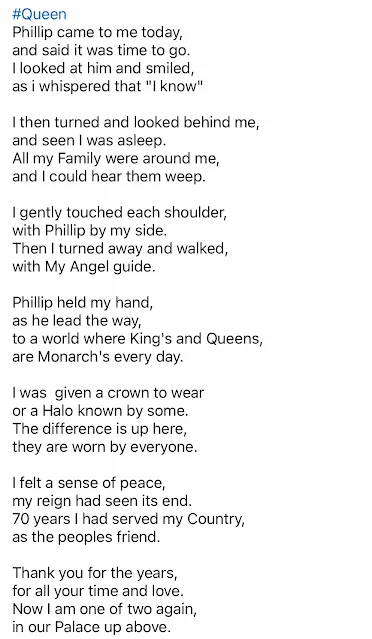


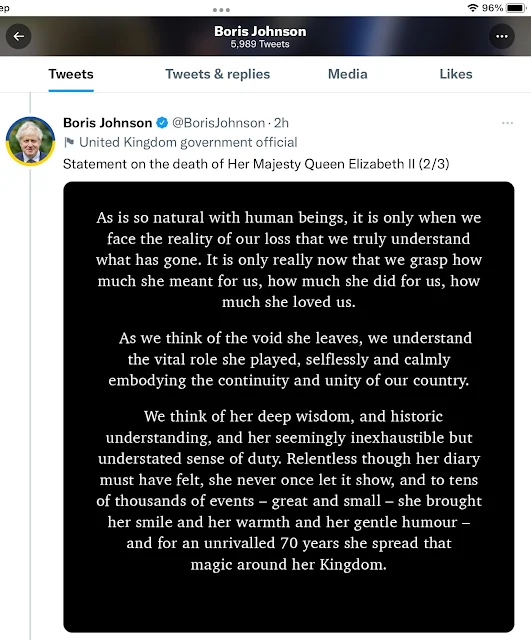



















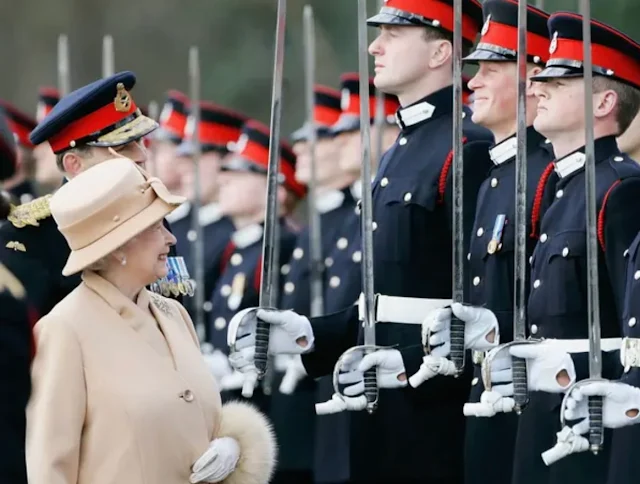



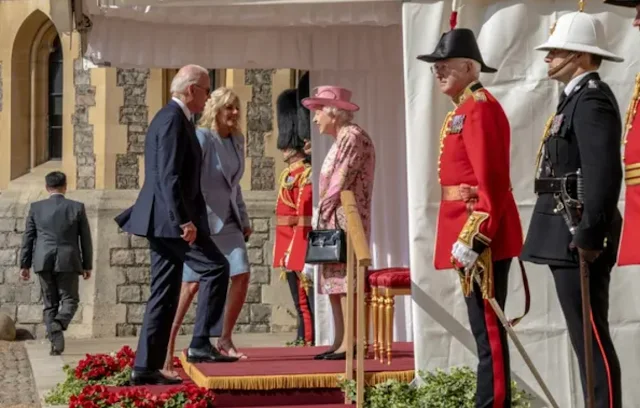




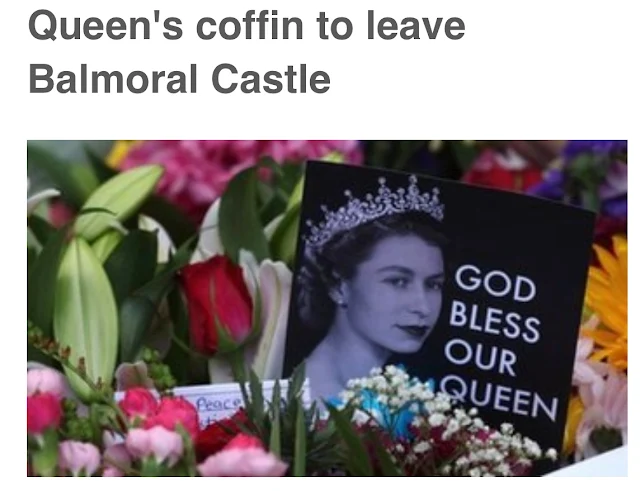







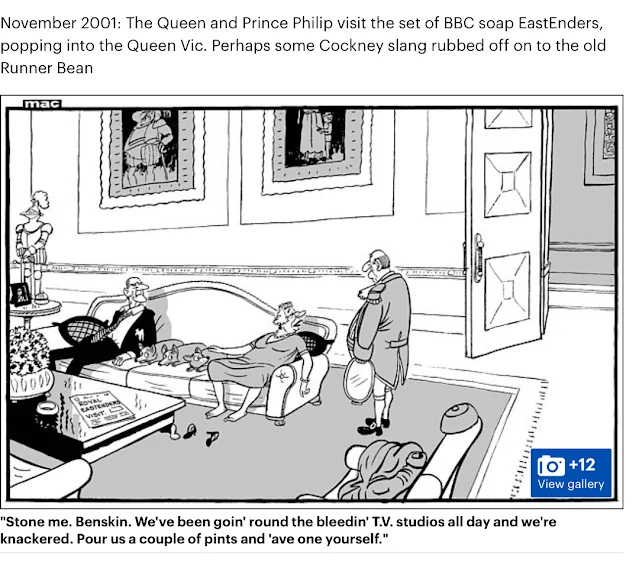






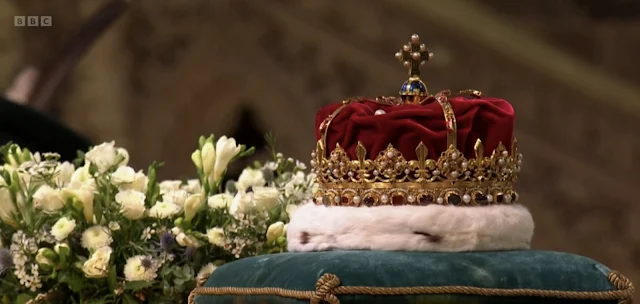
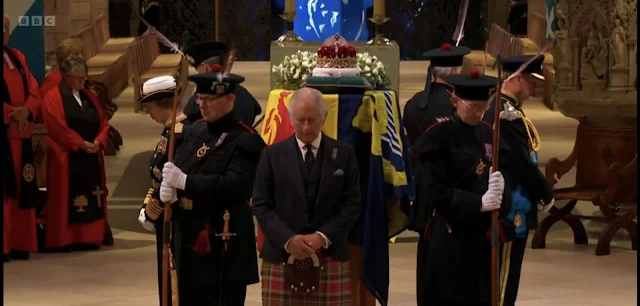





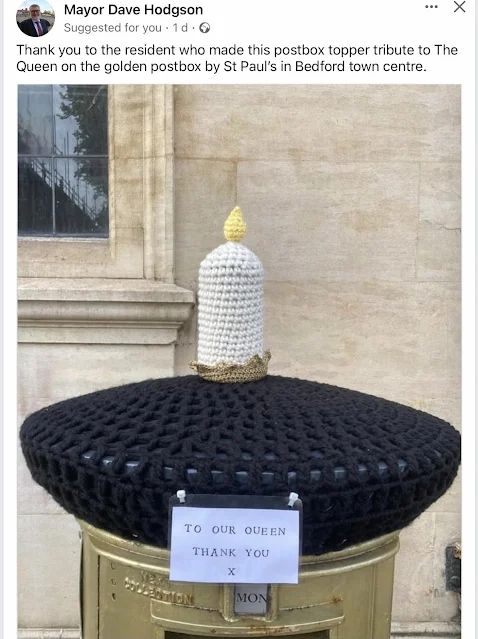



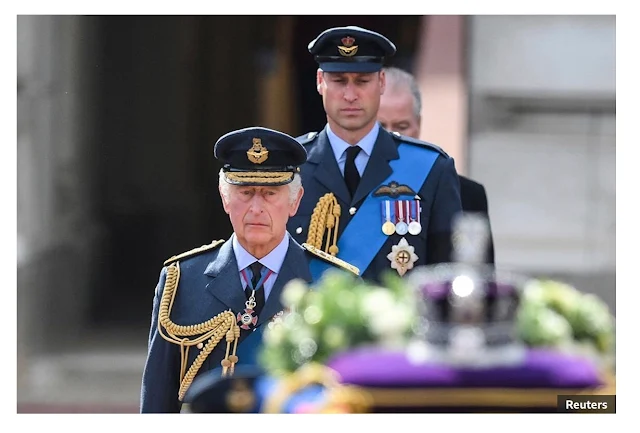




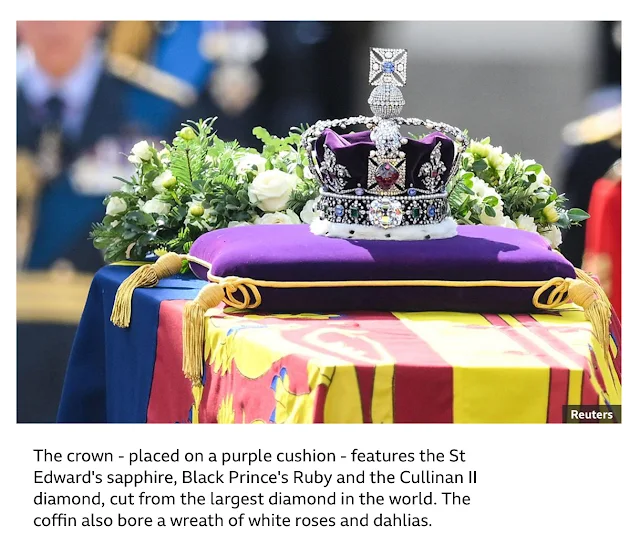





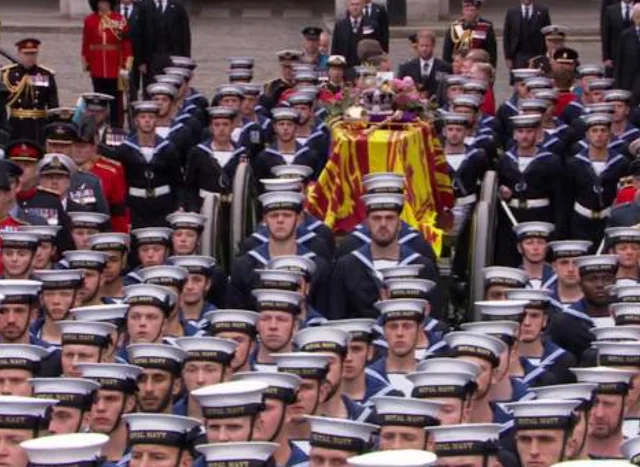



Comments
Post a Comment